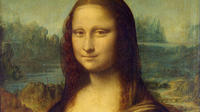Skip The Line Guided Tour: Louvre Museum
- Overview
Beat the long lines of the Louvre Museum and discover its masterpieces with an informative guided tour in English. Discover Da Vinci's Mona Lisa and the most famous pieces of this world-renowned museum. After the visit, you will have free time to explore the other exhibitions. Meet your guide at a central location in Paris a few minutes away from the Louvre, and get ready to immerse yourself deep within the Louvre masterpieces. Just a few of the highlights on your 90-minute tour include: the Venus de Milo, The Wedding Feast at Cana, Da Vinci's Mona Lisa, and The Raft of the Medusa . Special Offer - Book and travel by June 30, 2016 and save 20% off our previously offered price! - Book Now!
The tour will be given by a national museum guide in order to ensure its success. During this tour, you will discover the museum’s collections, whether it is your first visit or you are a regular museum-goer. This introductory tour is the best option for a first visit since it gives you an overview of the museum’s most famous works. After the tour, you will have free time to explore the museum at your pace.
A visit to the Louvre and its collections lets visitors discover Western art from the Middle Ages to 1848, as well as a large number of ancient civilizations. Yet it also offers another history to explore. The grand palace that houses the museum, which dates back to the late twelfth century, is a true lesson in architecture: from 1200 to 2011, the most innovative architects have in turn built and developed the Louvre. Long the seat of power, this royal residence was also home to French heads of state until 1870 and is one of the major backdrops to the history of Paris and of France.
After the Hundred Years’ War, the French kings, who had become accustomed to living away from Paris, continued to reside mainly in the Loire Valley and only traveled occasionally to the capital a few times a year. Things changed during the reign of François I (1515–47), after the king’s military defeat at the Battle of Pavia in 1525 and his captivity in Spain. On his return to France, the king wanted to regain control of his capital and decided, in an official declaration of 1528, to make his main residence there. The medieval château was updated and, at the end of his reign, the king decided to have it rebuilt, but the main work was not undertaken until the reign of Henri II (1547–59).
